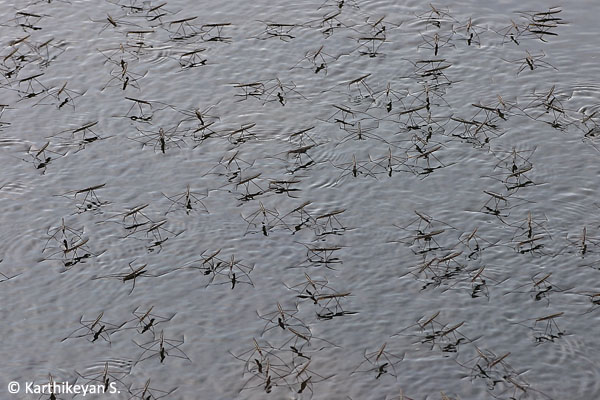All of us, during our childhood, must have made paper boats and let it float on water. Unknowingly, we had accessed the physical properties of water to indulge in those moments of joy.
The marvels of a paper boat or a leaf gently floating over water are both possible because of the surface tension of the water. The strength of this force is adequate to support light objects and prevent them from sinking. We learnt this and a lot more about water as we grew up, but often failed to relate it to the floating boat.

Like all insects, the pond skater has 6 legs. They (body and legs) are also covered with water repelling hair which further helps the insect to stay afloat. Only 4 legs (2nd and 3rd pair) are prominently visible. These are long and help to distribute the weight of the insect and to propel it on the water surface. The other 2 legs (1st pair) are the shortest and help in detecting vibrations/ripples on the water surface. This ability helps the pond skater to detect other small insects that may fall on the water. Once detected, it will swiftly ‘skate’ to the source of the disturbance, use the claws on the first pair to puncture the prey and eventually suck it dry!
Look around, observe nature carefully, there is plenty to learn – for that matter even refresh and recollect what we have learnt during our school days and relate them to nature better. Whoever said Nature is only about Biology!?